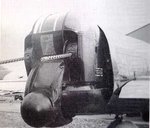the lancaster kicks ass
Major General
- 19,931
- Dec 20, 2003
The bomb laod of the B-17 was not so bad.
yes, it was, it wasn't unheard of for B-17s to hit berlin with 2,000lbs of bombs, normally no more than 6,000lbs, the lanc would go to berlin with 14,000lbs of bombs, and a much MUCH greater variety than the B-17, or B-24 for that matter.............
The US knew how to use the B-17, the Brits did not know how to use it and thus had to learn from the US
no, we learnt early on in the war unescorted daylight raids don't work, so we bombed by night, being american however they thought they knew better and sent off their B-17s on unescorted daylight raids, as a concequence of the high losses they almost quit their bombing campaign! we didn't need the B-17 for bombing, we had the lanc and halibag, the americans taught us nothing about bombing, and i would like to point out the B-17 was only "successful" over Europe with fighter escort.............

